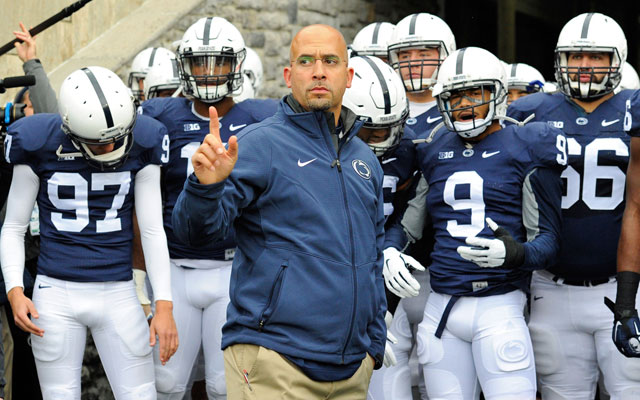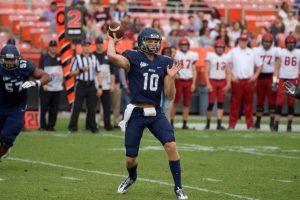In college athletics, the head coach is the program, for better and for worse. Professional teams not only have owners, general managers, and generally larger support staffs, but they also employ their athletes, making them theoretically easier to motivate. But at the collegiate level, the head coach is the sole in-game and personnel chief and is further tasked with getting the most out of a team of unpaid 18-to-21 year olds.
It is hardly surprising, then, that Dabo Swinney of the reigning national champion Clemson Tigers is the second-highest paid coach in sports, with Alabama’s Nick Saban just behind him (Jon Gruden, of the NFL’s Oakland Raiders, is first at $10 million per season. Attempting to explain why owner Mark Davis gave him that much is beyond my pay grade).
College football is a massive business. Last year, Saban’s football program brought in $111.1 million in revenue and turned a $48.2 million profit. Saban is also credited with the spike in undergraduate enrollment that ‘Bama has seen in the last decade-plus. With so much power concentrated in the hands of the head coach, there’s immense pressure on athletic directors to push the right buttons when it comes to hiring and firing for the position.
What follows is a technical analysis of head coaching hirings from 2010-16 that attempts to answer the question: where should you hire your head coach from? Hirings will be divided along a number of lines, including:
- Whether they have an offensive or defensive background
- Whether they have been a head coach at the college level before
- Whether they were hired internally or from outside the program
- The role they occupied before being hired
- The largest individual improvements and regressions
My central question is: what are common characteristics shared between coaches that have been brought in and sustainably improved the winning percentages of the programs they’ve taken over? Because, at the end of the day, an improved winning percentage is the single most important metric indicating a hire has been successful. There are rebuilding efforts in college athletics, but they are never voluntary, and there are certainly no tanking campaigns like the NFL’s Miami Dolphins are engaging in currently. Coaches are incentivized in every year of their time in the role to win as many games as possible.
My data set includes all active head coaches hired between 2010-16. 2010 is the front end of the timeline because I consider it the modern era of college football that has featured an increased emphasis on passing the football and the offensive side of the ball overall, and perhaps most importantly because hires that have managed to stay at their university since before 2010 (like Saban and Swinney) have obviously been successful in their roles and could skew the data disproportionately.
Similarly, hires after 2016 have not yet been in their roles for four seasons and it is too early to make definitive rulings about their hirings. Florida State’s Willie Taggart and UCLA’s Chip Kelly, for example, inherited messy situations and have not had the chances to see their first recruiting classes move through the ranks yet.
Additionally, since active head coaches hired around 2010-12 have by and large been very successful in their roles, I decided to offset their successes by using data from all coaches hired after 2010 at schools with an active head coach hired during that 2010-16 time period. For example, Gary Andersen, Wisconsin’s 2013 hire who left after 2014, counts in our data because his successor, Paul Chryst is still in Madison, but Bret Bielema, the Badgers’ head coach from 2006-12, does not. Conversely, Mack Brown does not count since he was re-hired just this year at North Carolina, but neither does Larry Fedora, hired in 2012 – UNC is not in the data set.
My reasoning was that coaches hired after 2010 that lasted a short enough time that they were replaced before 2016 were likely less successful (or left to take a better head coaching job in some cases) and would restore more balance to the set, giving an overall improvement/regression near-net-zero from the data. The reason that having a near-net-zero improvement/regression is critical is because, if indeed hires from some avenues are often more successful than hires from another, I want both groups to be identifiable.
Remaining are 87 total hires at 51 different universities with a combined improved winning percentage over their predecessor of 4.35%, a sufficiently small figure. Which were the most successful, and what did they have in common?
Note: All records and winning percentages are as of 9/5, when I started the project before dislocating my elbow, rendering me unable to type. Apologies to Coach O and Dave Clawson in advance.
Offensive or Defensive Minds?
As referenced earlier, college football has seen something of an offensive revolution in the last decade. Spread offenses that air the ball out have phased out balanced pro-style offenses, and even the NFL is starting to see teams go almost exclusively spread. I’m not sure if this is indicative of a societal trend where the best athletes of this generation want to play offense and score, but defenses haven’t been able to keep up. Per-game scoring averages crept above 30 points for the first time ever in 2016.
It’s unsurprising then, that 59 hires (67.8%) came from offensive backgrounds, including 29 coaches (33.3%) who were offensive coordinators somewhere when they were signed. It’s difficult to argue with the reasoning of ADs: fans want to see points, and the allure of finding the “next big thing” on the side of the ball that has undergone a radical transformation recently is strong.
The offensive minds recorded a 5.62% improvement upon their predecessors, while the 27 defensive hires (with one discarded as an outlier) recorded a more modest 1.79% improvement.
First-time Head Coach?
45 (51.72%) of the 87 hires were first-time head coaches at the collegiate level, showing that overall, there was not an overwhelming trend towards or against hiring individuals with head coaching experience.
Naturally, many big-name schools look for sitting head coaches because they have the financial resources to lure them away from their current jobs, but there are also certain instances where hiring someone with head coaching experience that was not in a head coaching role at the time of their hiring can be shrewd. For example, Mike Leach’s time at Washington State has seen the program’s winning percentage jump 37.2% during his tenure as compared to Paul Wulff’s, who was in the role from 2008-11. Previous head coaches saw a 9.64% increase in winning percentages at their new gigs, while teams with first-time hires did not fare as well, seeing a slight regression in winning percentage (-0.45%). This is fairly notable and is promising for hires such as Maryland’s Mike Locksley, who oversaw an abysmal New Mexico team a decade ago before working as a coordinator for a spell. Locksley’s Terps dismantled #21 Syracuse 63-20 in his second game back as a full-time head man.
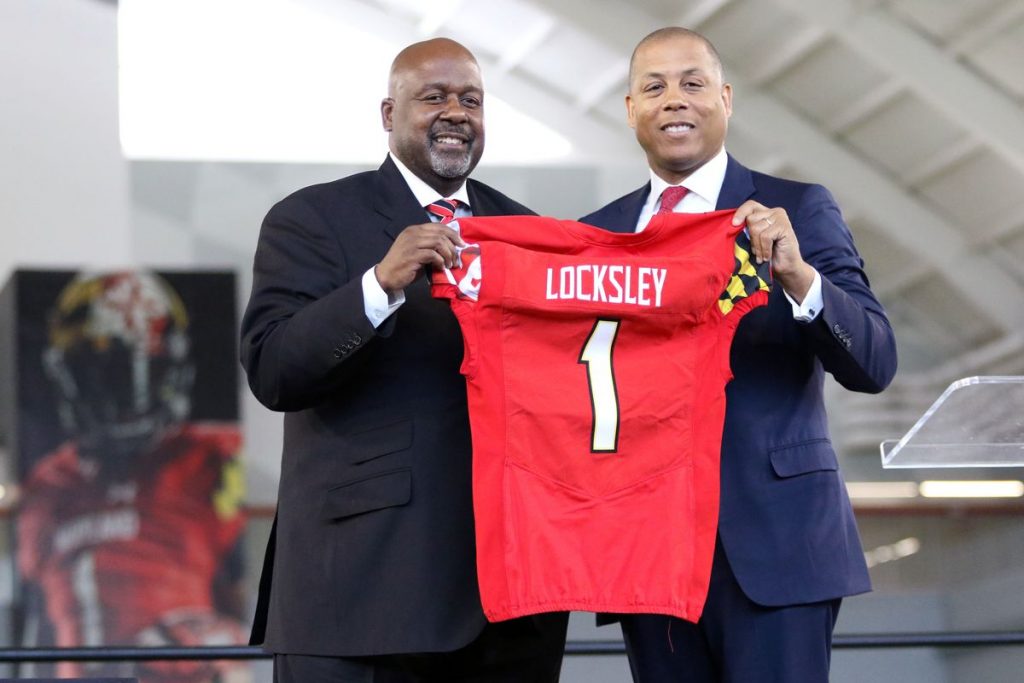
Mike Locksley has Maryland off to a promising start in his second head-coaching stint
Internal Hires
Fourteen (16.09%) head coaching hires were made from within the program, with eight offensive coordinators, three defensive coordinators, and three position coaches receiving promotions. While not an overly popular route to take in a head coaching search, the last few years have seen a few notable cases, including at Ohio State (Ryan Day – offensive coordinator) and Miami (Manny Diaz – defensive coordinator) in the most recent offseason coaching cycle.
Internal hires have, on average, improved winning percentages over their predecessor by 4.02%. This figure fails to give a true idea of the volatility of internal hires, however – there have been some spectacular successes, like Arkansas State’s promotion of Hugh Freeze in 2011. Freeze led the Red Wolves to 10 wins in his only season after Steve Roberts had managed only eight combined in the two seasons preceding his departure. Under Bill Blankenship, meanwhile, Tulsa’s winning percentage dropped 20.2% from its mark during Todd Graham’s tenure. Five of the fourteen internal hires had winning percentages either at least 10% above the program’s previous clip, while five others had marks at least 10% below.
What Was Their Previous Job?
Major-conference head coach: Six major-conference head coaches from this data set were lured away from their jobs, which includes Notre Dame’s Brian Kelly and Boston College’s Steve Addazio, pulled from Cincinnati and Temple, respectively, in the now-dissolved Big East. That leaves only four head coaches hired from traditional Power 5 schools: James Franklin (from Vanderbilt by Penn State), Paul Chryst (from Pitt by Wisconsin), Steve Sarkisian (from Washington by USC), and Lane Kiffin (from Tennessee by USC). Together, their winning percent changes averaged 2.4%, but excluding Kiffin’s forgettable tenure in Los Angeles, all five coaches improved the winning percentages of the programs they took over.
Other FBS head coaches (the modern Group of Five): Other FBS head coaches account for fourteen (16.09%) of the hires. Together, they improved winning percentages by 4.59%, with nine of the fourteen (64.29%) contributing positive marks. Only two were hired by non-Power 5 schools, including Bryan Harsin at de facto Power 5 Boise State, which reflects how attractive athletic directors generally view this route. Names from the data set that were hot around the time of their hiring include Justin Fuente (from Memphis by Virginia Tech) and Chris Petersen (from Boise State by Washington).
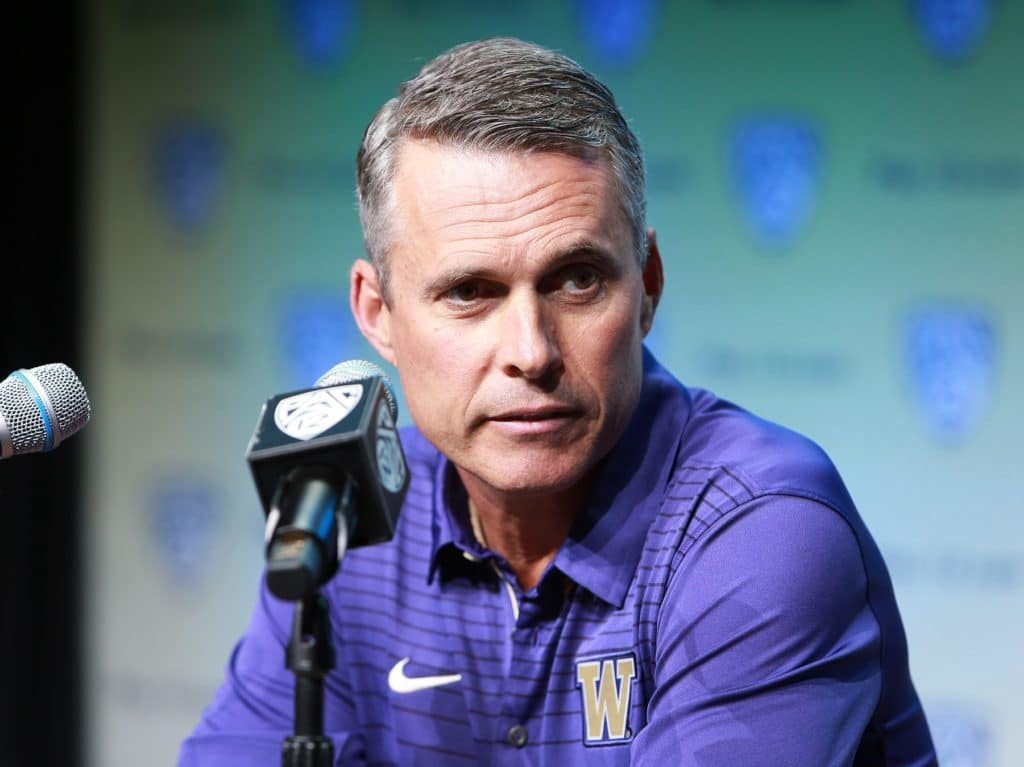
Chris Petersen had his pick of just about any job in the nation after working magic at Boise State
Petersen has been the superstar of the bunch, improving Washington’s winning percentage by 20.3% over Sarkisian’s already-solid record and getting the Huskies to the College Football Playoff. Tulane, the only “true” Group of Five school to nab a fellow G5 head coach in Willie Fritz from Georgia Southern, has (perhaps unsurprisingly) seen their winning percentage climb 14.1% as the Green Wave posted their first winning record since 2013 last year.
FCS head coaches: Dipping into the pool of FCS head coaches has become more popular in recent years, and with good reason. There have been nine (10.34%) hires from amongst the FBS’ little brother in Division I, all to non-P5 schools with the exception of Mike London at Virginia. Seven of the nine have improved winning percentages, and by an average mark of a massive 13.42%.
Some of the home run hires include Jeff Monken (by Army from Georgia Southern, which was then an FCS school) and Jay Hopson (by Southern Miss from Alcorn State). None quite match up to Bill Clark, however, who was hired by UAB from Jacksonville State in 2013. Clark guided a two-win Blazers team to a 6-6 record in his first season before the program was famously dissolved, only to return three years later. Clark has led the team to eight and eleven wins in their two seasons since reinstatement in one of the best feel-good stories college football of late.
Offensive Coordinators: Hiring an offensive coordinator is the most common hiring route among the divisions I’ve drawn, with 29 (33.33%) total hires. Those are composed of eighteen Power 5 OCs, two non-major conference OCs, eight internal hires, and one NFL offensive coordinator (Bill O’Brien, by Penn State from the New England Patriots). Overall, the OCs have boosted winning percentages by 6.22%, though that figure is heavily aided by Freeze’s Arkansas State turnaround and Vanderbilt’s gem of a find when they hired Maryland offensive coordinator James Franklin in 2011. Without those two, the OCs’ improvements fall to an average of 3.26%.
As expected, there have been plenty of hits and misses alike, with sixteen of the twenty-nine (55.17%) hires improving winning percentages. David Shaw has been a brilliant internal promotion by Stanford and has taken the program to heights not seen under Jim Harbuagh, while Jim McElwain took Colorado State from four, to eight, to ten wins in his three seasons after being brought in. Meanwhile, the hire of Utah OC Norm Chow by Hawai’i in 2012 saw the wheels come off for the Rainbow Warriors, while Colorado State tried to go back to the well with a SEC OC in hiring Mike Bobo from Georgia (McElwain was brought in from Alabama). Under Bobo, the Rams won seven games in three straight seasons, a slight but not-disastrous regression, but slipped to 3-9 last year.
Defensive Coordinators: Ten defensive coordinators have been tabbed from the data set. Nine were brought on from Power 5 schools, with the exception of Rocky Long’s internal promotion at San Diego State. Interestingly, seven have gotten Power 5 jobs as well. This would suggest that non-major conference schools are often looking to make splashy hires that can raise the program’s stature quickly by employing innovative coaches. The results of the defensive coordinator hires have been conclusively poor – winning percentages have dropped by 9.01%, on average, with seven of the ten hires regressing upon their predecessor’s marks.
Position Coaches: It may seem like positional coaches get hired only sporadically at the FBS level, but there have been nine signings (10.34%) from the set. Occasionally, a Top 25 school’s recruiting coordinator gets poached, like Doc Holliday from West Virginia by Marshall and Frank Wilson from LSU by Texas San-Antonio. Other times colleges reach up into the NFL ranks, like Ball State hiring alum Mike Neu, who was serving as the New Orleans Saints’ QB coach, and Tulane going for Curtis Johnson, who was actually the Saints’ wide receivers coach before Neu came aboard.
Overall, positional coaches have improved winning percentages 3.8%. The hires have been all over the map, with North Texas’ Dan McCarney and Marshall’s Holliday improving winning percentages by over 25%, while three coaches have been at the helm of regressions larger than 20%, including Neu. Not surprisingly, eight of the nine hires have been at the non-major conference level.
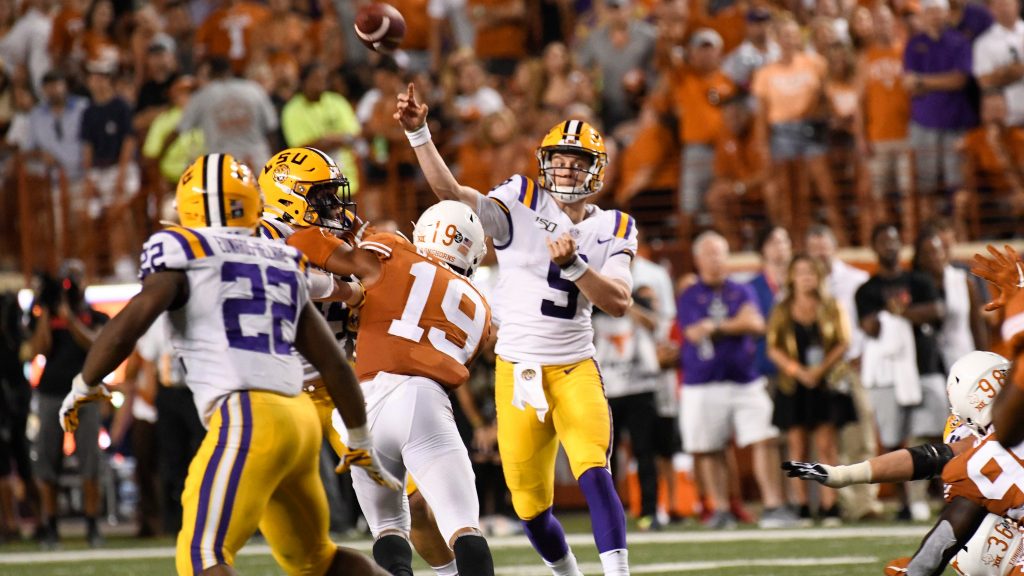
Ed Orgeron has led LSU to a 3-0 start, while QB Joe Burrow is a surprise Heisman candidate
The only exception? Why, that would be the Bayou’s favorite son, Ed Orgeron of LSU, who was actually elevated from defensive line coach to interim HC following Les Miles’ firing in 2016. Coach O hasn’t yet improved LSU’s winning percentage over Miles’ mark, but he’s right on his heels with the Tigers’ hot start.
“Creative” Hires: Seven head coaches were filed under the “other” category, including Leach and New Mexico’s Bob Davie, who were both working as television analysts after previous head coaching stints at the time of their hiring (though Davie had been out of coaching for much longer than Leach). Davie and Leach have both been masterful hirings, improving winning percentages by over 30% after taking over for some very underperforming predecessors.
Jim Harbaugh at Michigan and Lovie Smith at Illinois were both recently fired NFL head coaches when they were brought into the fold in the Big Ten, and each has struggled to some extent by their respective programs’ standards.
Other oddballs? UNLV head coach Tony Sanchez was actually coaching high school powerhouse Bishop Gorman when he was inked in 2015, while Lance Leipold of Buffalo was the head man at Division-III titan Wisconsin-Whitewater.
The Largest Individual Improvements and Regressions
#3 Improvement: Mike Leach at Washington State (37.2%), 2012-present
I’ve already touched on this hiring a few times, but it can’t be overstated how brilliant the move was. Paul Wulff was 9-40 over four years at the helm, and the Cougars were the laughingstock of the Pac-12.
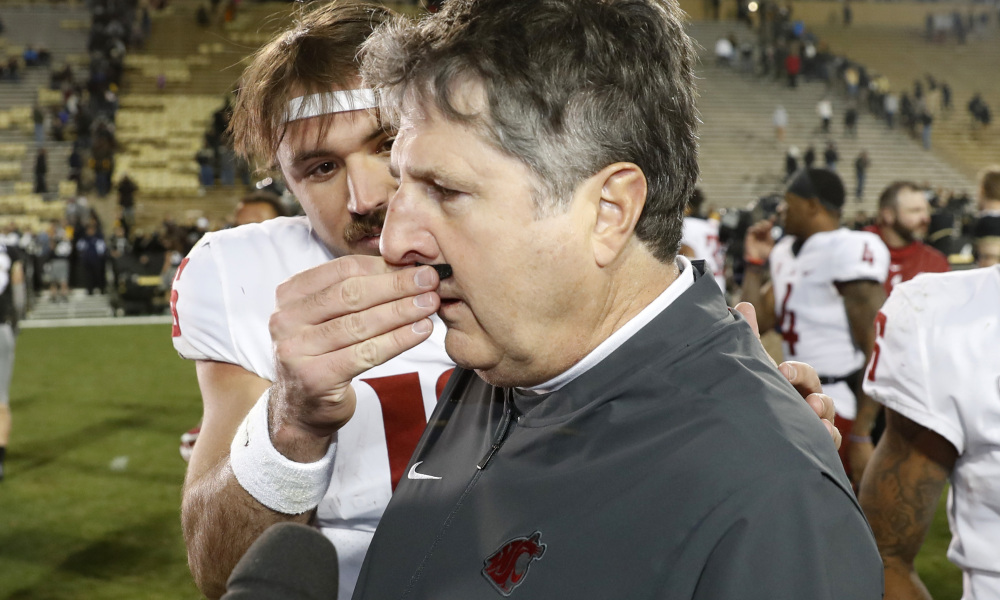
They don’t get much more eccentric than Mike Leach, but it’s hard to argue with his results
Leach’s hiring came after he had spent two years as a television analyst following his fallout at Texas Tech, and it took time to pay dividends, as the Cougars posted only three wins in two of Leach’s first three seasons. They’ve won at least eight games in each of the last four campaigns, however, and are now the class of the conference after last year’s 11-2 breakout.
#2 Improvement: Bill Clark at UAB (44.2%), 2014, 2017-present
Clark’s story has been highlighted as well, but never fails to amaze. Last season, they also won 11 games and beat Middle Tennessee in the C-USA championship to boot. Clark should be on the radar of every FBS AD with a head coaching vacancy this spring.
#1 Improvement: James Franklin at Vanderbilt (44.8%), 2011-13
Franklin’s job at Vandy has to be considered one of the coaching jobs of the century. An also-ran in the always-competitive SEC, the Commodores had gone 2-10 in each of the two seasons preceding Franklin’s arrival from Maryland. Franklin catapulted them to six wins in 2011 and then to nine wins apiece in 2012 and 2013 with two bowl wins and above-.500 conference records in those two years.
After Franklin left for Penn State, Vandy parlayed their new image as an up-and-comer into landing Stanford defensive coordinator Derek Mason, who arrived with a sterling reputation. To spoil the ending, Mason is 24-40 with a 9-32 SEC record across six seasons. What happened in Nashville under Franklin may never be repeated, and there’s a feeling across college football that he’s knocking on the door of something great at Penn State.
#3 Regression: Mike Neu at Ball State (-26.2%), 2016-present
Neu has not built off of Pete Lembo’s success in Muncie, Indiana, posting a 10-26 record at his alma mater through three seasons. That’s more in line with Ball State’s traditional win totals, but Lembo, a Georgetown grad and current Memphis assistant head coach, pulled off a 33-29 record in five seasons at the helm. After spending time as Drew Brees’ positional coach in New Orleans, Neu has struggled to energize the Cardinals offense, which has never ranked above 77th nationally in scoring average during his tenure.
#2 Regression: Norm Chow at Hawai’i (-32.0%), 2012-15
Chow’s aforementioned spell at Hawai’i was a total mess. Taking over for Greg McMackin, the former defensive coordinator who posted a 29-25 record in his time, Chow’s hire was supposed to get the Rainbow Warriors scoring like they were during the late 2000s playing in June Jones’ “Run & Shoot” offense that twice finished first nationally in scoring. Chow’s teams never averaged more than 27.4 points per game, however, and the defense bottomed out. After starting 2015 with six straight Mountain West losses, Chow was fired midseason.
#1 Regression: Chris Ash at Rutgers (-38.4%), 2016-present
Rutgers set a very strong precedent in the 2000s and early 2010s competing in the Big East, AAC, and Big Ten under Greg Schiano and Kyle Flood. Schiano engineered a total program turnaround in his eleven years there, taking a floundering team and compiling solid .504 winning percentage that included three seasons with nine wins or more. Flood built upon that success, winning nine more contests in 2012 before actually going 8-5 in Rutgers’ first year in the Big Ten in 2014.

Chris Ash’s reputation has taken a considerable hit in his time at Rutgers
A 4-8 record in Flood’s fourth season prompted the team to cut bait, and they honed in on Ash, Ohio State’s defensive coordinator, to help them compete in the new conference. The hire was generally applauded, with Bleacher Report calling Ash “just the man to lead the turnaround.” Three years later, Ash is 8-30 with three Big Ten wins in three seasons, and the Scarlet Knights are at a crossroads. Though Rutgers was perhaps getting in over their heads joining the Big Ten, few saw a decline this catastrophic on the cards. Last season, the team was dead last in the country in points per game, and Ash’s job will likely be taken if he can’t engineer a turnaround. The only question is: who’ll be bold (or dumb) enough to take it after him?
Conclusions
Overall, opting to hire a coach with an offensive background has worked out better than hiring a defensive-minded candidate (5.62% vs. 1.79% improvements).
Hiring coaches with previous NCAA head coaching experience usually pays off: those coaches have improved their teams’ winning percentages by 9.64%, while first-time head coaches have seen their teams regress 0.45%.
For Group of Five administrators, looking to the FCS for potential head coaches seems a very attractive avenue. FCS head coaches have improved winning percentages by 13.42% when given FBS jobs. Even for Power 5 ADs, the FCS route could become attractive, with hires such as Kansas State’s recent poach of Chris Kleiman from North Dakota State. FCS head coaches generally have a longer track record of success than their Group of Five counterparts.
Hiring sitting head coaches, from any conference, has been a generally safe move. The home run hires, even among “it” names in the coaching cycle, might be few and far between (with Dino Babers by Syracuse and Matt Campbell by Iowa State as potential exceptions), but the risk of a complete flameout is also low.
Meanwhile, hiring coordinators, while very popular among lower-profile schools, has not always worked out. James Franklin and Hugh Freeze were jackpot signings, but plenty of moves have gone the opposite direction. Stay away from hiring defensive coordinators – they have seldom improved the programs they’ve taken over. Often an easy sell to Power 5 fanbases, DCs have a reputation as having “paid their dues” and being stabilizing presences, but based on the data, they might not be able to innovate their approaches appropriately to the modern game.
Finally, “creative” hires have usually worked out in unpredictable ways. For every Doc Holliday and Mike Leach, there’s a Mike Neu and Lovie Smith in the other direction. Here’s to hoping Lovie engineers a turnaround, though – college football Twitter needs his Santa beard.


